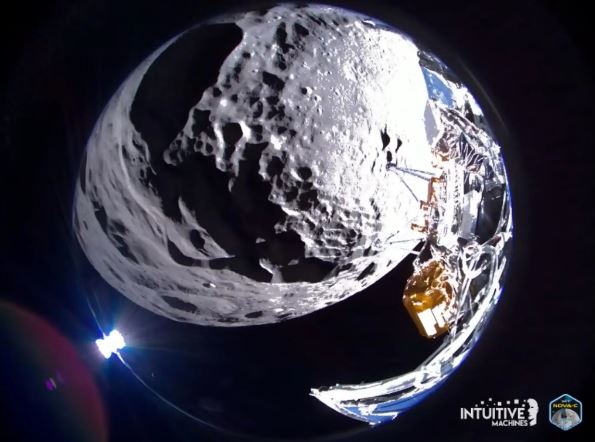In a historic milestone for private space exploration, the first privately owned spacecraft touched down on the lunar surface. However, shortly after its momentous landing, the spacecraft, named Odysseus, encountered an unexpected setback—it toppled over. Intuitive Machines, the company behind the spacecraft’s construction, confirmed the incident on Friday, reporting that despite the topple, Odysseus remains in good condition.
The spacecraft’s journey to the moon’s south pole region marked a significant achievement, as it became the first U.S. vehicle to softly land on the moon since the Apollo 17 mission in 1972. Steve Altemus, the CEO of Intuitive Machines, expressed optimism during a NASA news conference, noting that despite the topple, Odysseus remains stable near or at its intended landing site. He highlighted the successful communication established with the lander, emphasizing its significance.
However, the unexpected topple has posed challenges, particularly in communication, as the spacecraft’s antennas are no longer directed towards Earth. Consequently, the flow of information between Odysseus and mission control is limited. Despite efforts, no photographs have been transmitted back to Earth post-landing, apart from one captured during the descent, revealing the shadowed and undulating lunar terrain.
Engineers at Intuitive Machines are actively working to gather more data from the spacecraft, analyzing the situation and exploring potential solutions. Tim Crain, the company’s Chief Technology Officer, recounted unforeseen glitches encountered during the mission, underscoring the frantic efforts made to salvage the landing.
One critical issue arose when Odysseus deviated from its intended trajectory upon reaching the moon, ending up in an elliptical orbit instead of a circular one. To compound matters, a crucial instrument, the laser range finders, malfunctioned due to safety switches remaining enabled during the spacecraft’s journey, rendering them inoperable.
Faced with the prospect of losing the mission, engineers scrambled to devise a solution. Fortunately, a backup instrument onboard, the Navigation Doppler Lidar, offered a lifeline. With swift action, the spacecraft’s software was patched to enable the Lidar to provide essential data for navigation, a feat achieved in record time.
Despite these challenges, Odysseus encountered a deviation during descent, descending faster than anticipated and moving sideways. This deviation likely led to the spacecraft toppling over upon touchdown, possibly due to one of its landing legs snagging the lunar surface. Despite the setback, similar incidents have occurred in the past, with spacecraft like Japan’s SLIM remaining operational post-topple.
Currently, engineers are focused on optimizing communication with Odysseus and assessing its scientific capabilities. Notably, a camera system developed by students at Embry-Riddle Aeronautical University in Florida remains attached to the spacecraft, presenting an opportunity for capturing images of the lunar surface.
Despite the challenges, the Odysseus mission continues, albeit with a time limit. With the approaching lunar night and its accompanying frigid temperatures, the spacecraft’s lifespan is limited. However, there remains hope that Odysseus may spring back to life with the return of sunlight, offering a glimpse into the future of private space exploration.

